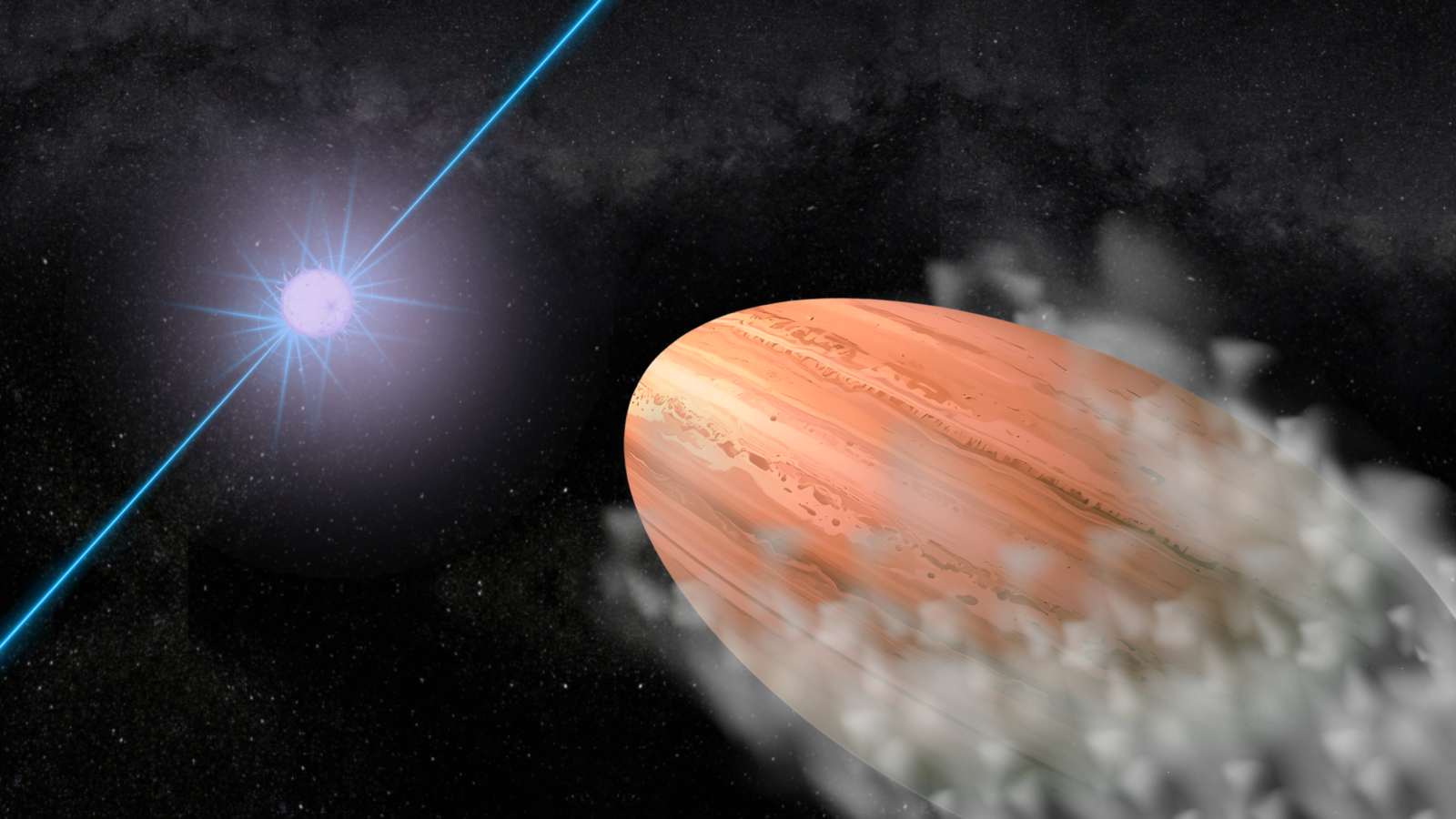A tiny Chinese satellite spotted the 2019 total solar eclipse from the moon
The views are amazing.

A tiny Chinese satellite in lunar orbit captured incredible images of a total solar eclipse over South America last year, thanks to commands from radio enthusiasts.
The images were taken July 2, 2019, with the tiny 'Inory eye' camera, installed on Longjiang 2, a microsatellite developed by a team at Harbin Institute of Technology (HIT) in northeast China.
Longjiang 2, also known as DSLWP-B, was launched with a twin in May 2018. The two tiny satellites piggybacked on the mission to launch Queqiao, a communications relay satellite that later facilitated the Chang'e 4 landing on the far side of the moon. The Longjiang program was designed to test a kind of interferometry technique for astronomical observations.
Related: The best photos of the 2019 total solar eclipse
More: What the 2019 total solar eclipse looked like around the web
While Queqiao continued past the moon to fulfil its role, the diminutive 99-lb. (45 kilograms) Longjiang 2 used its own propulsion to slow down and enter lunar orbit.
Here, the tiny satellite received commands, sent from students at HIT via radio enthusiasts in Europe, instructing the spacecraft to image the moon, Earth and stars.

An image from Longjiang 2 of the solar eclipse that crossed over South America on July 2, 2019.

An image from Longjiang 2 of the solar eclipse that crossed over South America on July 2, 2019.

An image from Longjiang 2 of the solar eclipse that crossed over South America on July 2, 2019.

An image from Longjiang 2 of the solar eclipse that crossed over South America on July 2, 2019.

An image from Longjiang 2 of the solar eclipse that crossed over South America on July 2, 2019.
For the images of the July 2019 eclipse, Reinhard Kühn, an amateur radio astronomer from Sörup, Germany, sent the commands timing the imaging of the eclipse using an antenna in his garden.
Breaking space news, the latest updates on rocket launches, skywatching events and more!
Longjiang 2 also carried a Saudi Arabia-built remote-sensing payload as part of the international cooperations surrounding the Chang'e 4 mission. The tiny satellite also returned amazing images of the Earth and moon.
Some of the pictures taken to the moon by DSLWP-B using Saudi Remote Sensing Payload to the moon https://t.co/24rxnqFOjv pic.twitter.com/YDXZbHXD8NAugust 1, 2019
Longjiang 2 ended its mission in August 2019 when it was deliberately crashed into the moon to remove any danger to future lunar missions.
Earlier this month, the team released an animated short film detailing the big returns from the tiny satellite.
Follow us on Twitter @Spacedotcom and on Facebook.

Andrew is a freelance space journalist with a focus on reporting on China's rapidly growing space sector. He began writing for Space.com in 2019 and writes for SpaceNews, IEEE Spectrum, National Geographic, Sky & Telescope, New Scientist and others. Andrew first caught the space bug when, as a youngster, he saw Voyager images of other worlds in our solar system for the first time. Away from space, Andrew enjoys trail running in the forests of Finland. You can follow him on Twitter @AJ_FI.

